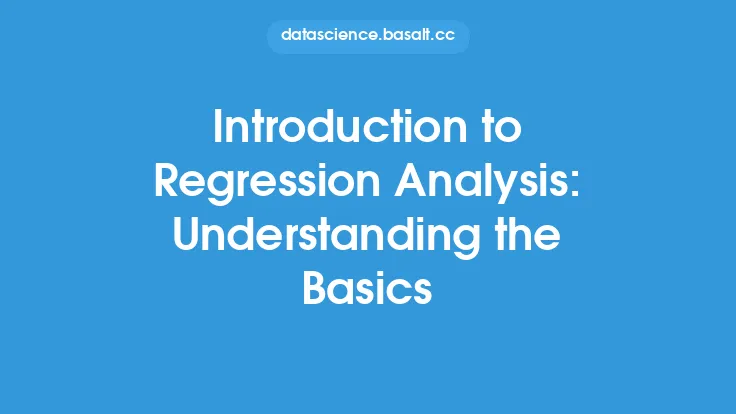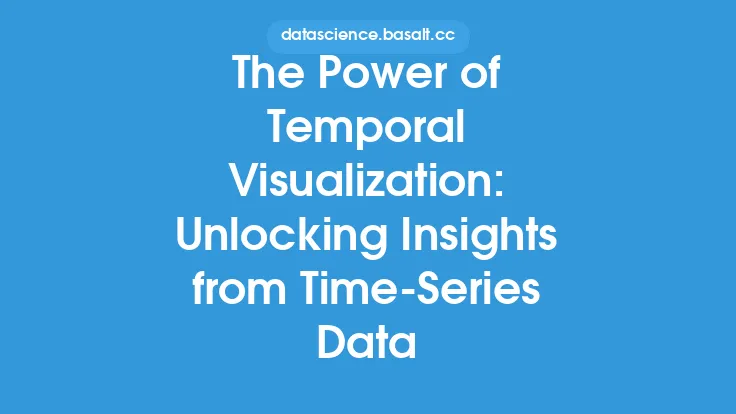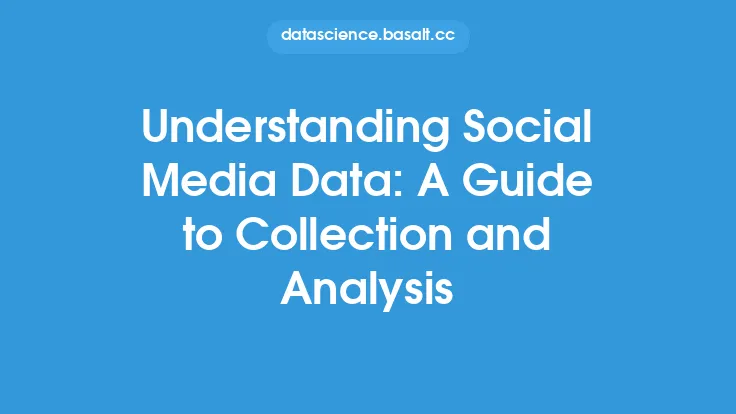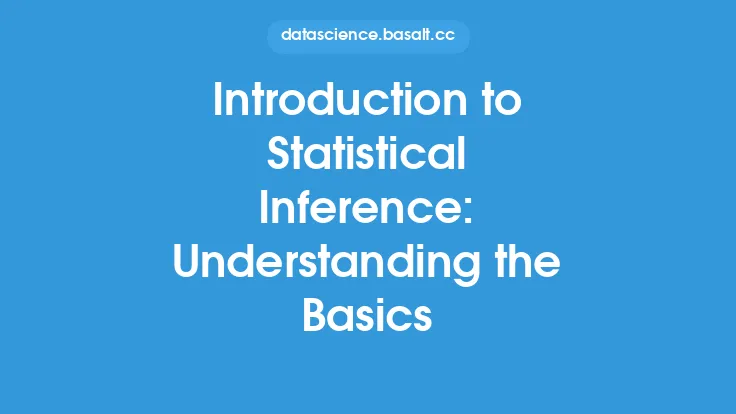Time series analysis is a crucial branch of statistics that deals with the analysis of data points collected over time, with the goal of understanding patterns, trends, and relationships within the data. This type of analysis is essential in various fields, including finance, economics, engineering, and environmental science, where data is often collected at regular intervals. The primary objective of time series analysis is to extract meaningful insights from the data, which can be used to make informed decisions, predict future events, or identify potential problems.
What is Time Series Data?
Time series data is a sequence of data points measured at regular time intervals, typically with a fixed frequency, such as daily, weekly, monthly, or annually. Each data point represents a specific value or measurement at a particular point in time. Time series data can be either univariate, consisting of a single variable, or multivariate, consisting of multiple variables. The analysis of time series data involves understanding the underlying patterns, trends, and relationships within the data, as well as identifying any anomalies or irregularities.
Importance of Time Series Analysis
Time series analysis is essential in many fields, as it provides valuable insights into the behavior of complex systems over time. By analyzing time series data, researchers and practitioners can identify trends, patterns, and relationships that can inform decision-making, predict future events, or optimize system performance. For instance, in finance, time series analysis is used to analyze stock prices, trading volumes, and other market data to make informed investment decisions. In environmental science, time series analysis is used to study climate patterns, weather trends, and air quality, which can inform policy decisions and mitigation strategies.
Key Concepts in Time Series Analysis
There are several key concepts in time series analysis that are essential to understanding the basics of this field. These include:
- Time series components: Time series data can be decomposed into several components, including trend, seasonality, and residuals. The trend component represents the long-term direction of the data, while the seasonality component represents regular fluctuations that occur at fixed intervals. The residuals component represents the random variations in the data that are not explained by the trend or seasonality.
- Stationarity: A time series is said to be stationary if its statistical properties, such as the mean and variance, remain constant over time. Non-stationarity, on the other hand, occurs when the statistical properties of the data change over time.
- Autocorrelation: Autocorrelation refers to the correlation between a time series and lagged versions of itself. Autocorrelation is an important concept in time series analysis, as it can help identify patterns and relationships within the data.
- Frequency domain analysis: Frequency domain analysis involves transforming time series data into the frequency domain, where the data is represented in terms of its frequency components. This can help identify periodic patterns and trends in the data.
Time Series Analysis Techniques
There are several techniques used in time series analysis, including:
- Descriptive statistics: Descriptive statistics, such as the mean, median, and standard deviation, are used to summarize the basic characteristics of the data.
- Visualization: Visualization techniques, such as plots and charts, are used to graphically represent the data and identify patterns and trends.
- Modeling: Modeling techniques, such as autoregressive integrated moving average (ARIMA) models and exponential smoothing, are used to forecast future values of the time series.
- Hypothesis testing: Hypothesis testing is used to test statistical hypotheses about the data, such as whether the mean of the data is significantly different from a known value.
Challenges in Time Series Analysis
Time series analysis can be challenging due to several reasons, including:
- Non-stationarity: Non-stationarity can make it difficult to model and forecast time series data, as the statistical properties of the data change over time.
- Noise and outliers: Noise and outliers can affect the accuracy of time series models and forecasts, and must be carefully handled.
- Multivariate data: Multivariate time series data can be challenging to analyze, as the relationships between the different variables must be carefully considered.
- High-dimensional data: High-dimensional time series data can be challenging to analyze, as the number of variables can be very large, making it difficult to identify patterns and relationships.
Conclusion
Time series analysis is a powerful tool for understanding and analyzing data collected over time. By understanding the basics of time series analysis, including the key concepts, techniques, and challenges, researchers and practitioners can extract meaningful insights from time series data, which can inform decision-making, predict future events, or optimize system performance. Whether in finance, economics, engineering, or environmental science, time series analysis is an essential tool for anyone working with data collected over time.





